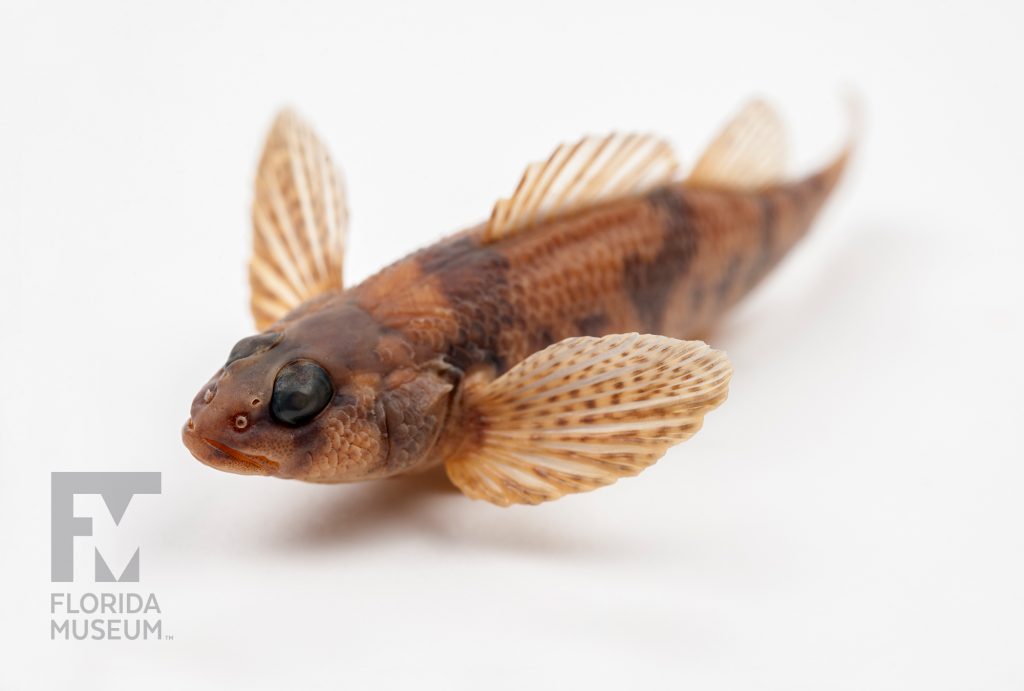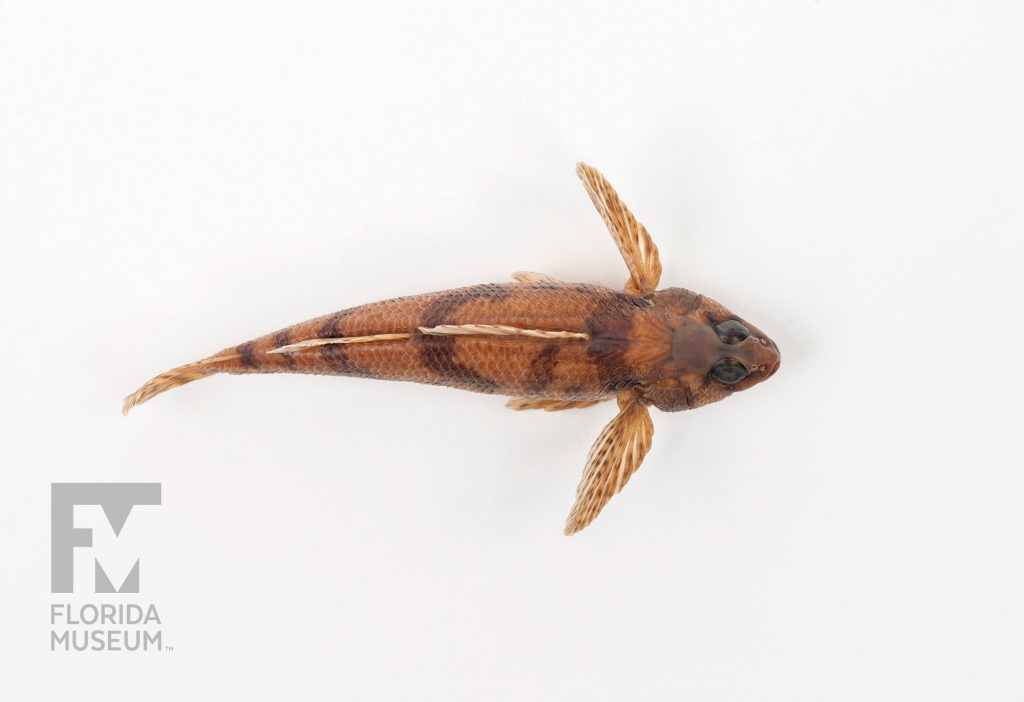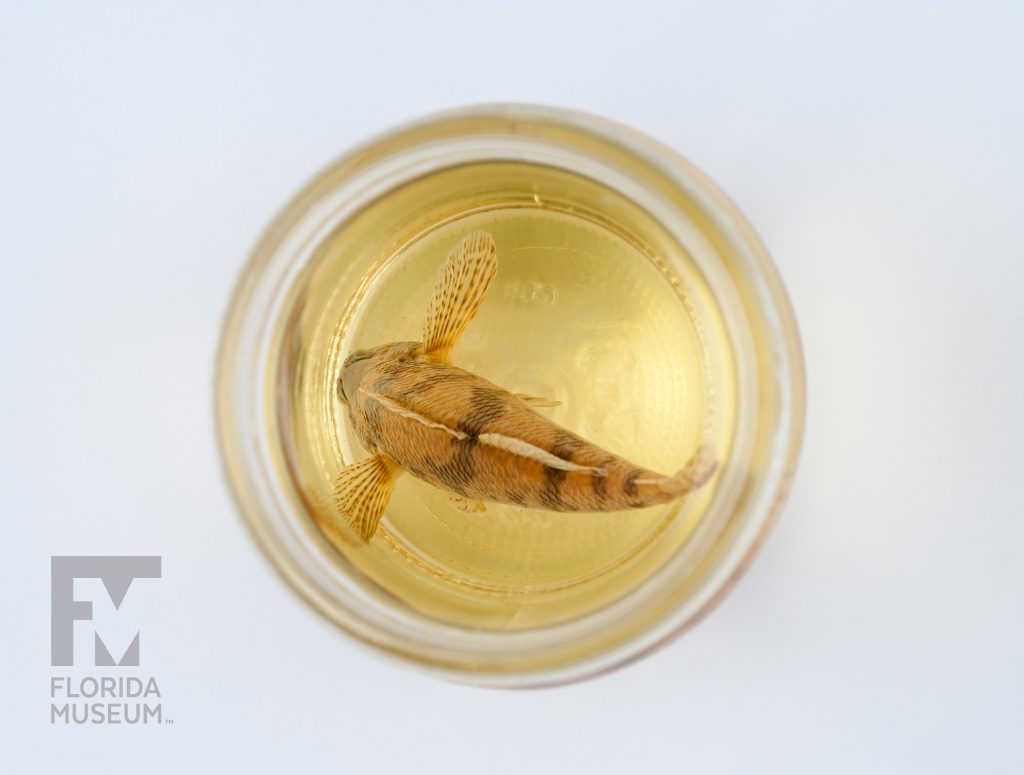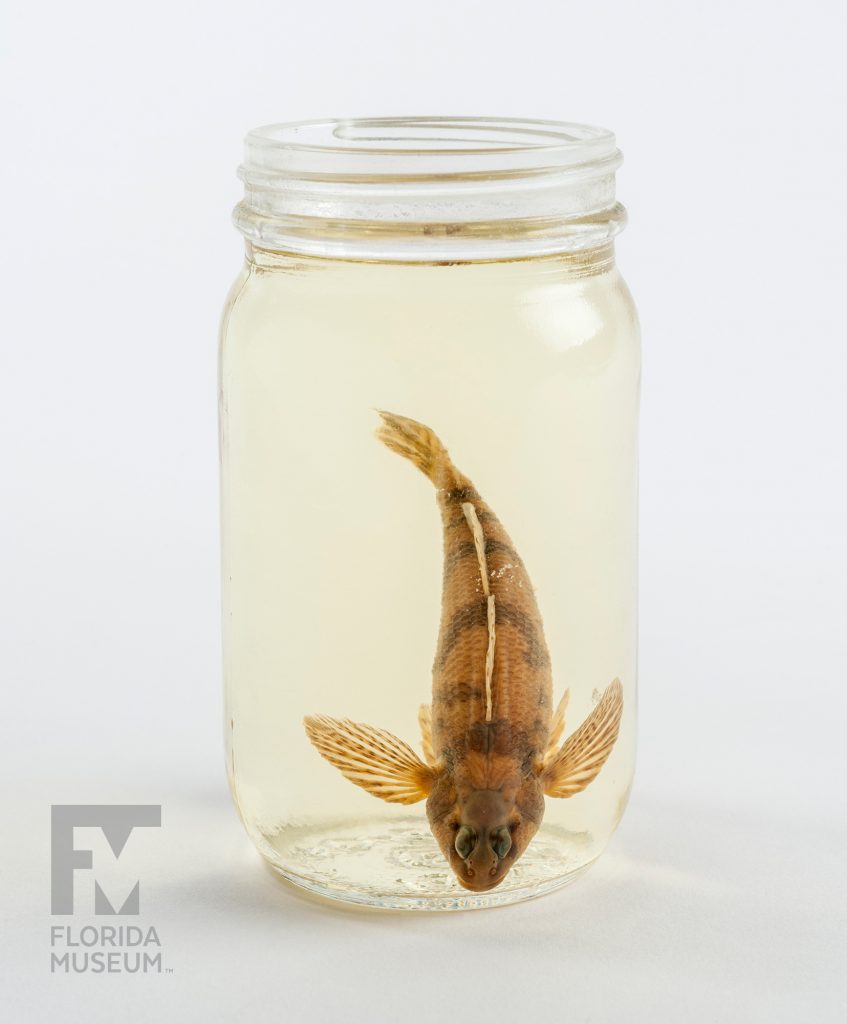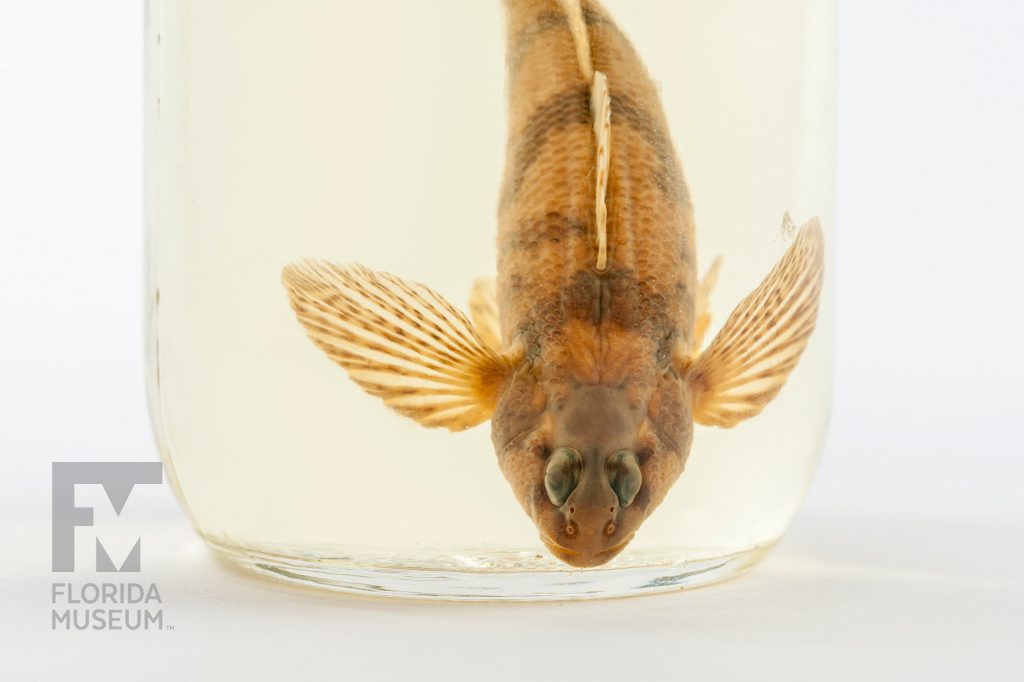Biologists discovered the Maryland Darter in 1912 in a creek in Maryland, and the reclusive fish wasn’t seen again until being found in a different creek in the 1960s. Infrequent sightings of the fish continued until it was last seen in 1988.
Summary
Maryland Darter (Etheostoma sellare)
From Harford Co., Maryland, Oct. 1985
Collection
Story
The Maryland Darter is the only species of freshwater fish in the United States known with certainty to have gone extinct in the past 30 years. Other species of freshwater fishes in the U.S. may have gone extinct – for example several species of whitefishes in the Great Lakes are either extinct or extremely rare, and others clearly are on the verge of extinction – but the Maryland Darter had such a small range and lived in habitats that are easy to sample so that we can be certain the species is gone. Repeated efforts to find it in the past 30 years have been unsuccessful.
The Maryland Darter was known from only two small creeks in the Chesapeake Bay drainage of Maryland. It was discovered and scientifically named in 1913 and was monitored periodically by the Maryland Department of Natural Resources, and others, since its discovery. The last sighting of the species was in 1985 when a single individual was seen during a 24-hour period that involved efforts to find it during the day and at night.
This species was and remains of special interest because it was morphologically quite distinct from other species of darters. Apparently lacking sexual dimorphism – which all of the species of darters show to some degree – and the evolutionary relationships of the Maryland Darter remain unclear. The only information we have on the Maryland Darter, in addition to the limited observations made during fieldwork, are from examinations of specimens in collections. We have two specimens in the fish collection at the Florida Museum of Natural History.
From these and other specimens we know that the species reached only about 3 inches in length and lived to a maximum of about two and a half years. It fed on snails and aquatic insects and probably spawned in the spring of the year. Based on the genital papilla of the female, which is unusual in this species, eggs probably were attached to rocks, where they may have been guarded by a male, a behavior that is known in only a few other species of darters.
The Maryland Darter was an interesting member of our North American freshwater ecosystems. If we had known from the time of its discovery that it was so extremely rare and so limited in its distribution, we might have been able to establish an effective program to protect it. Unfortunately, it was gone before we realized how imperiled it was.
Larry Page
Curator, Ichthyology*
Florida Museum of Natural History
Exhibit
On display Sept. 23, 2017-Jan. 7, 2018, Rare, Beautiful & Fascinating: 100 Years @FloridaMuseum celebrated the Museum’s rich history. Each Museum collection was asked to contribute its most interesting items and share the stories that make them special. Though the physical exhibit is closed, this companion website remains online, providing an opportunity to experience the Florida Museum’s most treasured specimens.
Exhibit Area: Extinction
Theme: Lost Biodiversity
 Want to see more? Explore more than 300 breathtaking color photos of plants, animals, fossils and cultural heritage materials from the Florida Museum of Natural History’s collections in the award-winning book All Things Beautiful available from the University Press of Florida.
Want to see more? Explore more than 300 breathtaking color photos of plants, animals, fossils and cultural heritage materials from the Florida Museum of Natural History’s collections in the award-winning book All Things Beautiful available from the University Press of Florida.
*This title was accurate at the time the exhibit was on display in 2017. Please visit the collection website to verify current staff and student information.
